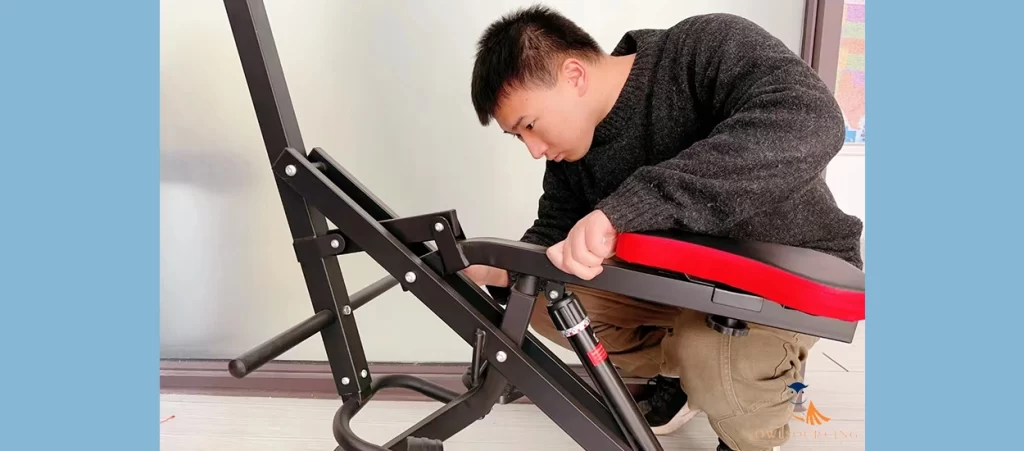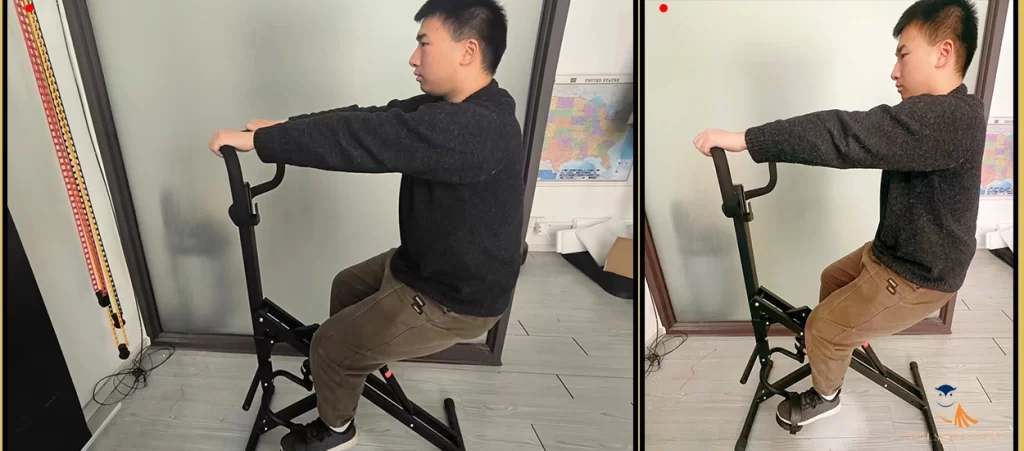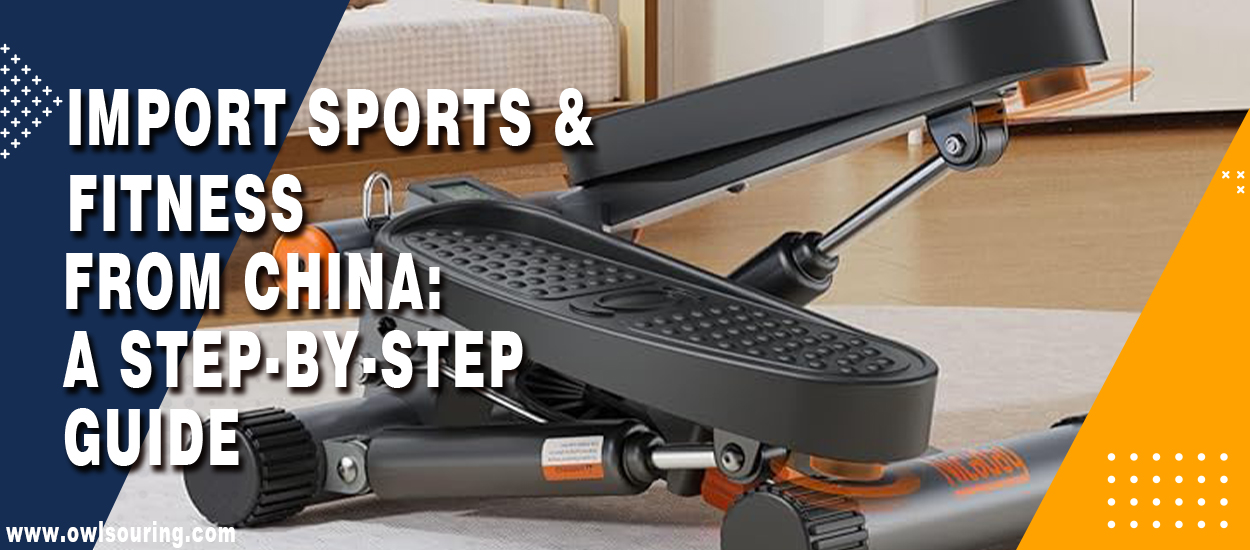Estimated reading time: 12 minutes
You are planning to import sports and fitness from China? This idea might sound very attractive to such people. Again, due to the lower cost of labour, Chinese Manufacturers tend to be cheaper in their prices.
What does all of this have to do with you? Well, it provides the possibility to earn much more money and to have higher profit margins.
However, this process is not without its challenges. You need to not only verify Chinese suppliers’ legitimacy but also learn how to contact Chinese manufacturers effectively.
Be aware that some Chinese suppliers may deceive their clients by providing bad products or reducing the quantity of goods.
Don’t worry. In this article, it will be described step by step how to import sporting goods and fitness equipment from China. We will also provide solutions to potential risks that may arise during this process.
Where Is Most Fitness Equipment Produced in China?
Currently, Guangdong, Zhejiang, and Shandong are the three major manufacturing regions of fitness equipment in China.
Among them, Xiamen in Fujian Province is one of the main cities in this kind of manufacturing and enjoys a high-quality equipment productive ability with strong ability.
Zack – Owlsourcing
Why Import Gym Equipment from China?
China is mostly famous for exporting manufactured products, and therefore, when it comes to price, China is our best bet when it comes to importing sports and fitness equipment.
Moreover, Chinese suppliers have extensive manufacturing experience, offering a wide variety of product choices. Therefore, many companies are very interested in importing sports and fitness products from China.
China produces up to 60% of the world’s Sports equipment, excluding apparel and shoes. Due to lower labor and production costs, many companies have been sourcing from the country.
New source: finance.yahoo
Key Regulations for Importing Gym Equipment to the U.S.
When importing gym equipment into the U.S., it is essential to understand and adhere to several regulatory standards to avoid legal issues:
FCC compliance for fitness Electric Gym Machines
Fitness machines such as treadmills and exercise bikes that plug into electrical sockets must comply with FCC Part 15 standards. This regulation controls radio frequency emissions to ensure equipment doesn’t interfere with other electronic devices.
CPSC regulations for Fitness Apparel
For those looking to import sportswear or fitness apparel, it’s important to comply with the Flammable Fabrics Act (FFA), governed by the Consumer Product Safety Commission (CPSC). The Act ensures that the textiles used in fitness apparel do not present fire hazards.
For the liquids, the classifications included Supplements and Shaker Bottles.
FDA rules for supplements and gym accessories
If you’re also importing dietary supplements or accessories such as shaker bottles, they have to comply with FDA rules.
The supplements have to adhere to all the labelling rules as well as the content quality as required under the Dietary Supplement Health and Education Act (DSHEA).
Prop 65 Export Compliance – California
California’s Proposition 65 requires you to label your gym equipment or sportswear as ‘lead-free’ if lead is used in certain chemicals that can cause cancer or harm reproduction.
Manufacturers and importers should test their products at accredited laboratories to confirm these safety regulations provided by SGS or QIMA.
What are the benefits of Importing Sports & Fitness from China?
Low labour costs, a diverse range of product types, and efficient production capabilities are the main reasons you should consider importing sports and fitness products from China.
1. Low Production Cost

China benefits from economies of scale, allowing its vast manufacturing sector to produce large quantities of products at a lower unit cost. This high-volume production reduces the overall cost of manufacturing.
Additionally, labour costs in China are lower compared to many countries. According to data from Statista, the labour cost per hour in Chinese manufacturing is $5.50.
In contrast, the average manufacturing labour cost in the USA is about $26.53 per hour – almost five times that of China!
Opting to produce sports and fitness products in the United States would be a significantly more expensive choice.
2. Diverse Product Range

Today, there is a wide range of sports and fitness equipment; however, due to having rich experience in producing various products and having developed manufacturing resources in China, you can choose a great variety of fitness equipment manufactured by Chinese manufacturers.
3. Customisation and Flexibility
Since most Chinese suppliers have their own manufacturing facilities, they are capable of meeting a wide range of customisation needs.
You can provide them with specific designs, features, and brand logos to create unique products tailored to market preferences.
The market is not static; you need to adapt your sales strategies based on market sales performance and preferences.
4. Large-Scale Production Capability
China’s large population base means that there is always a workforce willing to work.
This capacity allows Chinese factories to manage sizeable production demands, particularly those necessitating manual labour, at low costs, and also ensures the capability for mass production.
Moreover, you have the option to rebrand products from China with your own brand identity through private labelling. Many brands on platforms like Amazon utilise Chinese factories for such private labelling and product customisations.
How to Import Sports & Fitness from China?

There are 7 steps to importing sports and fitness from China: research the products, verify China suppliers, order samples of products from Chinese suppliers, negotiate terms, ship, clear customs, and inspect goods.
Here is a closer look at each step.
Step 1: Research the types of gym equipment
Gym equipment varies in type based on different fitness goals and exercise needs, thus catering to diverse audience groups.
Before sourcing from China, you need to research the market and types of gym equipment. Select the product types that best fit your needs based on market reports.
Additionally, we have compiled information on types of gym equipment for your reference:
Based on fitness goals, the main categories are divided into the following products:
- Cardiovascular Equipment: Includes treadmills, elliptical machines, stationary bikes, etc. They are mostly used for cardiovascular exercises to enhance heart health, stamina, and calorie reduction.
- Strength Training Equipment: Such as free weights, weight machines, power racks, etc., used in strength training, endurance training, and muscle power.
- Functional Training Equipment: Includes medicine balls, resistance bands, battle ropes, etc. It is mostly used in developing functional strength, coordination, and fitness levels.
- Bodyweight and Flexibility Equipment: Such as aerobic step, aerobic ball, aerobic rope, etc. Mainly used to guarantee the variety of exercises for group aerobics and to strengthen cardiovascular function and coordination.
- Group Exercise Equipment: Such as aerobic steps, exercise balls, jump ropes, etc. Mainly used to provide a variety of exercises in a group workout setting, enhancing cardiovascular function and coordination.

Selecting the best type of gym equipment based on your market demand can aid in product sales.
Step 2: Verify China Supplier
This step is usually missed, but is very important in coming up with a conclusion on whether the first move was the right one or not. In China, some suppliers are fake, as far as they look like real suppliers.
However, the market is dotted with various forms of cons, which are not restricted to fake and low-quality goods. There are even some suppliers pretending to be bogus firms!
If you try to pay them a visit at their factories, they are likely to have one of the other reasons as to why you cannot be allowed in, even if you know that they do not have any factories at all.
Therefore, please verify the legitimacy of your supplier before placing an order.
For further information, read this article: How to Verify a Chinese Supplier’s Legitimacy?
Chinese fitness equipment manufacturers
Key Manufacturing Regions: If you want to do business in China, the best thing is to visit the markets and make your choices from the best suppliers based on your type of products.
When searching for gym equipment manufacturers in China, consider visiting provinces such as:
-
Jiangsu
-
Guangdong
-
Zhejiang
-
Shandong
These regions host the majority of China’s gym equipment manufacturers, offering competitive pricing and scalable production.
Top Commercial Gym Equipment Manufacturers in China
Here are brief highlights:
| Rank | Brand | Strengths | Notes |
|---|---|---|---|
| 1 | Johnson | Premium global brand (Matrix, Horizon), high R&D | Top-tier but highest in price |
| 2 | Impulse | OEM + branded, mid-high quality, global presence | Strong in hotels and gyms |
| 3 | YR | Affordable, commercial strength specialist | Great balance of price and quality |
| 4 | WNQ | Cardio-focused, known for F1 treadmills | Mixed reviews on ergonomics |
| 5 | DHZ | Strong R&D, Italian-German design | Affordable but lower-tier materials |
| 6 | Shua | Diverse lines (home, outdoor, physio), strong in China | Limited commercial strength options |
| 7 | Relax | Solid cardio range, high material quality | Innovation has slowed recently |
| 8 | Body Strong | Cost-effective, broad export network | Design features could be improved |
| 9 | MBH | Innovative designs, 430+ products, global reach | Competitive sibling rivalry with Body Strong |
| 10 | Orient | Government projects, 600+ products | Limited international growth |
In our blog post, we provide detailed information on how to find a manufacturer in China.
Ordinarily, it is possible to purchase from B2B online marketing places such as Alibaba, Made-in-China.com, and other online research and forums.
Of course, if you don’t have the time or are concerned about the professionalism of online platforms, please contact us. Owlsourcing is a global sourcing agent that assists in importing sports and fitness products from China.
Our professional team can find reliable manufacturers for you, offering a one-stop service from procurement to transportation.

Import Sports and Fitness Equipment from China
OwlSourcing makes your procurement easier by bringing you directly in touch with audited, factory-approved suppliers—no wasted time browsing questionable options on Alibaba. From yoga mat imports, gym equipment, to home fitness equipment imports, our ground-level quality control team and tailored product development service ensure professional-grade output at all times.
✅ Factory-Verified Suppliers
We represent only those manufacturers that have a history of providing export experience and the capability to meet your volume.✅ End-to-End Sourcing Assistance
From product sourcing to delivery, we manage quality inspections, production follow-up, and international shipping, so you don’t have to worry about it.✅ Transparent, Upfront Pricing
No secret markups. Every quote is tailored to your product details, order quantity, and service level requirements, so you can always see where your money’s going.👉 Reach out to us today for an easy, transparent, and professionally guided sourcing experience.
China Sport Equipment Wholesale Manufacturer & Supplier
Below is a list of some of China’s most reputable gym equipment manufacturers, known for high-quality production and global reach:
Attending Trade Shows to Source Gym Equipment
In addition to online searches, attending trade shows in China offers a great way to meet suppliers in person, view product samples, and negotiate deals. Here are some major trade events for fitness and gym equipment:
ChinaFit / IWF (International Health, Wellness, and Fitness Expo)
Held annually in Beijing, the ChinaFit/IWF Expo is a large-scale event with hundreds of exhibitors. It is a hub for discovering the latest gym equipment, fitness accessories, and wellness trends.
Importers can network with manufacturers and attend seminars on industry innovations.
Canton Fair (Guangzhou)
Though not solely focused on fitness, the Canton Fair is China’s largest trade event. It offers opportunities to meet with gym equipment suppliers from various regions and explore new product ideas.
CIHIE (China International Health Industry Expo)
CIHIE, held in Beijing, is dedicated to health and fitness products. Here, you’ll find gym equipment manufacturers displaying new releases and showcasing emerging technologies in fitness.
Step 3: Order samples of products from Chinese suppliers
After finding a suitable Chinese supplier for sports and fitness, don’t rush to place an order.
Buying product samples from China can help you assess the quality of the products to ensure they meet your standards and expectations.
These samples serve another purpose as well – they can be used for market testing to gauge target customers’ reactions to the equipment.
If they express enthusiasm for the products, you can confidently place large orders.
Conversely, if your target customers have reservations about these products, based on the feedback from the samples, you can request the supplier to make necessary improvements or customisations to better meet market demands.
Step 4: How do you negotiate prices with Chinese gym equipment suppliers?
Discuss and negotiate terms including prices, payment terms, minimum order quantities, lead times, and after-sales service.
Clearly outline the product specifications to ensure there are no misunderstandings. Draft a formal contract or purchase agreement that includes all agreed-upon terms.
Also Read:
- NDAs Work
- Permits and Licenses When Importing from Asia
- Purchase Order and Proforma Invoice
- Warranties & Refunds When Buying From China
Step 5: shipping gym equipment internationally

Decide on the most suitable mode of transportation based on cost, volume, and urgency.
Work with a freight forwarder or China shipping agent who is experienced in importing from China. Plan for potential shipping delays and manage your inventory accordingly.
Step 6: Clear Customs
Learn about the import requirements, taxes, and charges that apply to sports and fitness equipment within your country.
Double-check that the documentation including the Bill of Lading, the invoices, and the packing list. There are agencies referred to as customs brokers who can help in the process of clearing the consignment.
Step 7: Receive and Inspect Goods
Once the goods arrive, inspect them immediately for quality and accuracy. Look for any signs of damage or if the order does not meet the expected standards.
In case of any issues, contact the supplier for the process of returning the product, requesting your money back, or having it replaced.
Note: Some Chinese suppliers may not pay attention to quality control; they are only interested in the money in your wallet!
Cost of Importing Gym Equipment from China

When calculating the total cost of importing sports and fitness from China, expect it to be approximately 25-30% of your goods’ cost.
These costs may include the transportation cost from China to the importing country, the inspection cost, the cost of engaging customs brokers, import duties, and taxes levied by the government.
Here is an outline of these costs:
Transportation expenses: The cost of shipping from China depends on the chosen incoterms as well as the weight of the products that are being transported. There will also be an additional charge for transporting the goods from the port to your destination.
Inspection and entry port fees: Cargo inspections by the CBP are conducted randomly. The cost of these inspections can range from $100 to over $1000, depending on the inspection type. Besides, there may be extra entry port fees, such as harbour maintenance charges.
Customs broker charges: Engaging a customs broker can simplify the import process. They assist with navigating the process, obtaining necessary permits, and managing port customs clearance. Their fees can range from around $100 to $300 or more, based on the volume of goods and the complexity of the required documentation.
Import duties and penalties: Import duties are calculated based on the type and value of the product. If there are any delays on your part, you might face fines from the CBP.
Tip: Choosing the right shipping method can save you money.
| Aspect | Sea Shipping | Air Shipping | Rail Shipping | Express Shipping |
| Speed | Slow | Fast | Moderate | Very Fast |
| Cost | Low | High | Moderate | High to Very High |
| Capacity | Large Volumes | Limited | Large Volumes | Small Packages |
| Distance | Long Distance | Long Distance | Moderate to Long | Short to Long |
| Flexibility | Low | Low | Moderate | High |
| Suitability | Bulk and Non-Perishable Goods | Urgent and High-Value Goods | Bulk Goods | Small, Urgent Shipments |
Challenges When Importing Sports & Fitness from China
It’s also important to be aware of the potential risks or challenges you may encounter during the process.
Some issues related to product quality testing can even impact your entire trade operation, as product quality is extremely important to customers.
Below are some common challenges encountered when importing from China and solutions on how to address them:
Legal and Regulations for Importing Fitness Equipment

Importers of all products have the responsibility to ensure they meet all relevant safety standards, labelling regulations, and documentation requirements.
Electronic items must adhere to electrical safety standards. In the European Union, this includes the Low Voltage Directive, EMC, and RoHS regulations.
In the United States, importers need to comply with FCC Part 15 concerning radio communications, along with voluntary Underwriter Laboratories standards.
With the ongoing global trend towards health and fitness, more specific safety standards for gym equipment will inevitably be implemented soon.
Quality Control and fitness equipment safety standards

Please pay great attention to the importance of quality in trade!
Some suppliers might change the materials used in product manufacturing.
Let me give you an example: our team members discovered during an inspection of dumbbells that the supplier had not used cement and sand as required. To cut costs, they used only dirt as the material for the product!
The cost of saving money was the reduction in product quality. Consequently, our members sternly reprimanded their actions and terminated the cooperation with that supplier.
Owlsourcing ensures that products meet clients’ requirements and places a strong emphasis on quality control.
Overcoming Language and Cultural Barriers
The most immediate challenge is the potential for miscommunication due to language differences. Misunderstandings can lead to errors in product specifications, quantities, and delivery schedules.
Misinterpretations due to language barriers can lead to non-compliance with legal and contractual agreements, potentially leading to financial losses and legal issues.
Use technology and tools that facilitate better communication, like instant messaging apps with translation features, which can aid in day-to-day communication.
Adapting to Market Changes

As mentioned at the beginning of the article, the market is always changing, and you need to conduct regular market research to understand current trends and adjust your product procurement strategy on time.
At the same time, you need to stay informed about changes in relevant laws and regulations to ensure your products comply with the latest standards; otherwise, they might not clear customs.
Read More:
- New Product Development for Amazon Sellers
- China International Trade Promotion Committee (CCPIT)
- Find Sustainable and Biodegradable Plastic Material Products from China
- How to Import Building Materials From China?
Final Thoughts
After reading the entire article, have you realised that importing sports and fitness products from China isn’t that difficult?
You only need to follow these seven steps: research the products, verify Chinese suppliers, order product samples from Chinese suppliers, negotiate terms, ship, clear customs, and inspect the goods.
Next, you need to be aware of potential risks or challenges you may encounter. Well, this might not be an easy task.
Don’t worry, Owlsourcing offers product sourcing services to find reliable Chinese suppliers and focuses on every aspect during the procurement process.
Not just quality checks and product packaging, we also provide product customisation services to give your products a fresh look and a competitive edge in the market.
Of course, if you are interested in working with us, please feel free to contact us. Our customer service will get in touch with you promptly.



4 thoughts on “How to Import Sports and Fitness Equipment from China?”
Thank you, Andy, I liked your article. What quality standards should I look for in Chinese sports and fitness products?
Hi Tay,
Thank you very much for your recognition. For Chinese sports and fitness products, quality standards can be examined from several key aspects: first, the quality and durability of the materials, second, whether the functionality of the product meets specific sports needs, and third, compliance with safety standards and certifications. The last thing is user comfort and experience. It is recommended that when purchasing, pay attention to whether the product has corresponding quality certification and user reviews. These are important references for judging product quality.
Hope these suggestions are helpful to you.
Andy
Hey Andy, thanks for taking the time to read this. I’d like to ask about the key things to keep in mind when making sure that fitness products imported into the U.S. meet all the necessary standards and regulations.
Thank you for your question! When importing fitness products into the U.S., consider these key points:
1. Ensure compliance with U.S. Consumer Product Safety Commission (CPSC) standards. 2. Check for proper labeling with safety warnings and usage instructions. 3. Conduct rigorous product testing for safety and quality. 4. Maintain all necessary documentation, including certificates of conformity and safety reports. 5. Prepare for customs inspections and provide accurate product information.
If you need further assistance, feel free to contact us anytime!